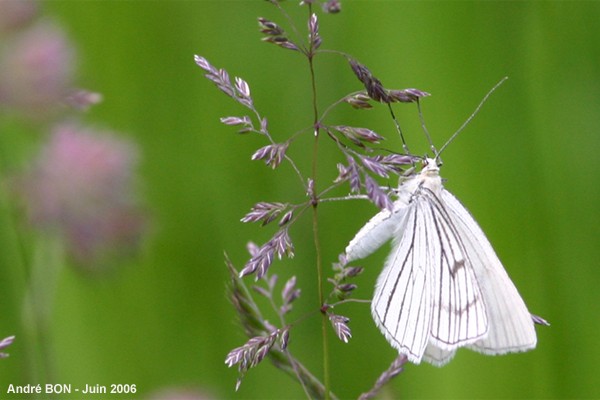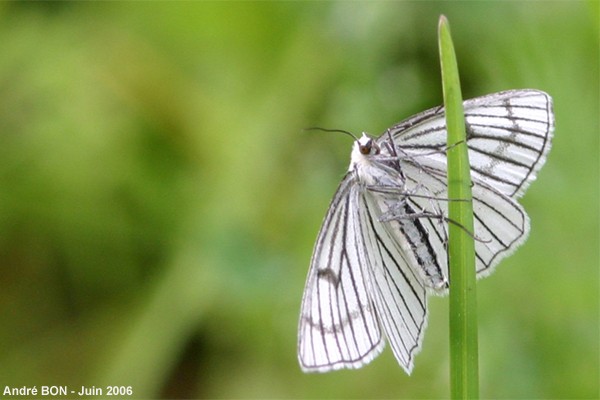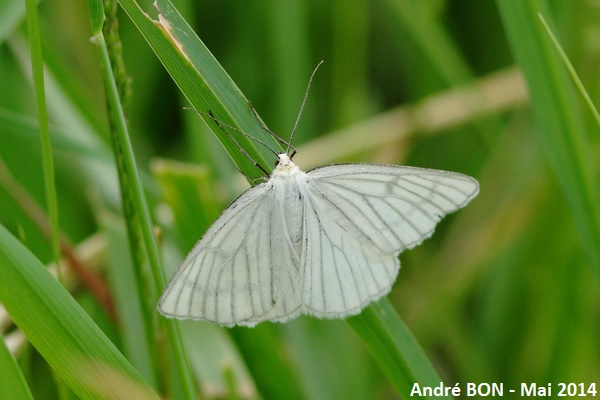



| Black-veined Moth (Siona lineata (Scopoli, 1763)) |




|
|
Scientific name: Siona lineata (Scopoli, 1763) Common name: Black-veined Moth French name: Divisée Order: Lepidoptera Suborder: Heterocera Family: Geometridae Subfamily: Ennominae Wingspan: 34-42 mm Biotope: Meadows, mountain slopes. Geographic area: All Europe and Asia to Siberia (endangered in Great Britain). Flight time: June to September. Number of generations : 1 Caterpillar: Greyish-brown with darker dorsal lines and darker lines on each side. Host plant: Wild Marjoram (Origanum vulgare). |
The Black-veined Moth got its name from the dark black veins marking the cell divisions on its white wings. It flies during the day and particularly in the sunshine. It overwinters as a caterpillar. |
| [To know more about the Black-veined Moth] [Next picture] [Top] |

|
I first thought that these were pieridae butterflies flying around. The landing location and the thin shape of the antennae quickly showed me that these were not butterflies but moths (heterocera). |
| [To know more about the Black-veined Moth] [Next picture] [Previous picture] [Top] |

|
The Black-veined Moth is used to landing on high grass stems. |
| [To know more about the Black-veined Moth] [Next picture] [Previous picture] [Top] |

|
The black veins are darker on the underside of the wings. |
| [To know more about the Black-veined Moth] [Previous picture] [Top] |

|
I used to often observing the Black-veined Moth species in damp meadows and I am not sure that this a good place for the host plant. |